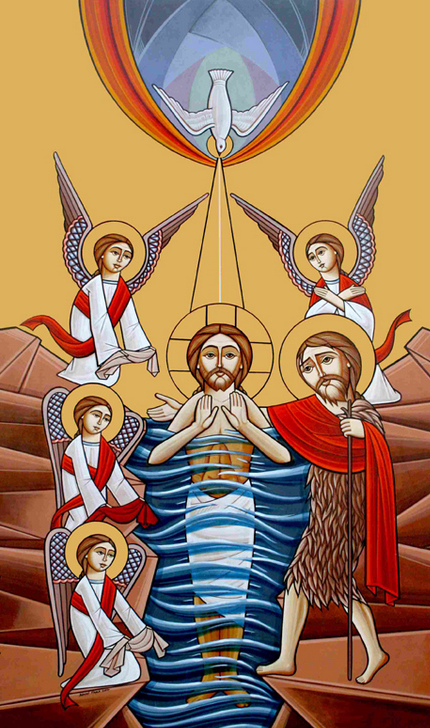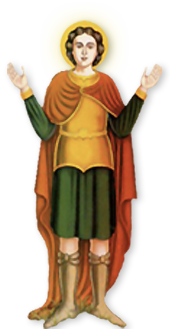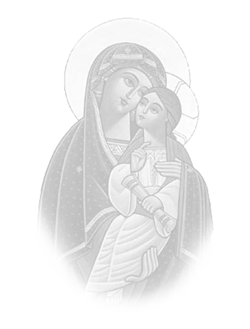The Holy Epiphany
By: GEORGE YOUSSEF

Holy Spirit descended in bodily form like a dove upon Him, and a voice came from heaven which said, “You are My beloved Son; in You I am well pleased.” (Luke 3:21-22). We see here that the baptism of Our Lord resulted in the appearance of the Holy Trinity (Epiphany) [1]:
1. The Son (Our Lord Jesus Christ being baptized and praying)
2. The Holy Spirit (in the form of a dove descending upon Him)
3. The Father (the voice from Heaven)
Baptism is necessary for redemption and entry into eternal life, and although Our Lord did not need to be baptized, He chose to do so to lead as example to show that all peoples; including servants, Priests, and Bishops, must be baptized. His baptism was the perfect example to follow because as Our Lord told His disciples, “Go therefore and make disciples of all nations, baptizing them in the name of the Father and of the Son and of the Holy Spirit” (Matthew 28:19)”. This command not only refers to the holy sacrament of baptism, but also reflects the Theophany as well [2, 4, 5].
Another reason why the Epiphany was so important is that with the opening of Heaven and the Holy Trinity being revealed to us, we see signs of a reconnection of communication between us and God which had been broken after the fall of Adam.
You can find icons depicting this event in most Coptic Orthodox churches. The icon traditionally incorporates john the Baptist baptizing Our Lord in the Jordan River, along with the dove (The Holy Spirit) descending upon Him from heaven which had been opened and where the voice of God the Father is heard from. In addition, there is often a small tree and an ax beside it in this icon. This refers to the message John the Baptist sends to us: “And even now the ax is laid to the root of the trees. Therefore every tree which does not bear good fruit is cut down and thrown into the fire.” (Matthew 3:10)
With the start of the new year and the feast of the Epiphany approaching, we should all try to get in the habit of analyzing our spiritual lives and continuously asking ourselves if the lives we are living will bear good fruit on the day of our judgement. Glory be to God forever. Amen.
Sources:
1. “St. Mark Coptic Orthodox Center - St. Abraam Church, Woodbury, NY.” Calendar of Coptic Fasts & Feasts - 2018, www.stabraam.org/the-coptic-faith/calendar-of-coptic-fasts-and-feasts/2018.html.
2. From “The Epiphay & St. John the Baptist” by His Holiness Pope Shenouda III (Orthodox Coptic Clerical College, Cairo) pp. 3-7
3. “Feast of Epiphany.” Coptic Heritage | 06 - Feast of Epiphany, www.copticheritage.org/rites/06_feast_of_epiphany.
4. “SACRAMENT OF BAPTISM The First Sacrament.” The Sacrament of Baptism, www.copticchurch.net/topics/thecopticchurch/sacraments/1_baptism.htm.
5. Kamel, Pam. “The Holy Feast of the Epiphany.” St Mark's Coptic Orthodox Church, London, stmark.org.uk/blog/item/235-the-holy-feast-of-the-epiphany.














 Subscribe to RSS Feed
Subscribe to RSS Feed